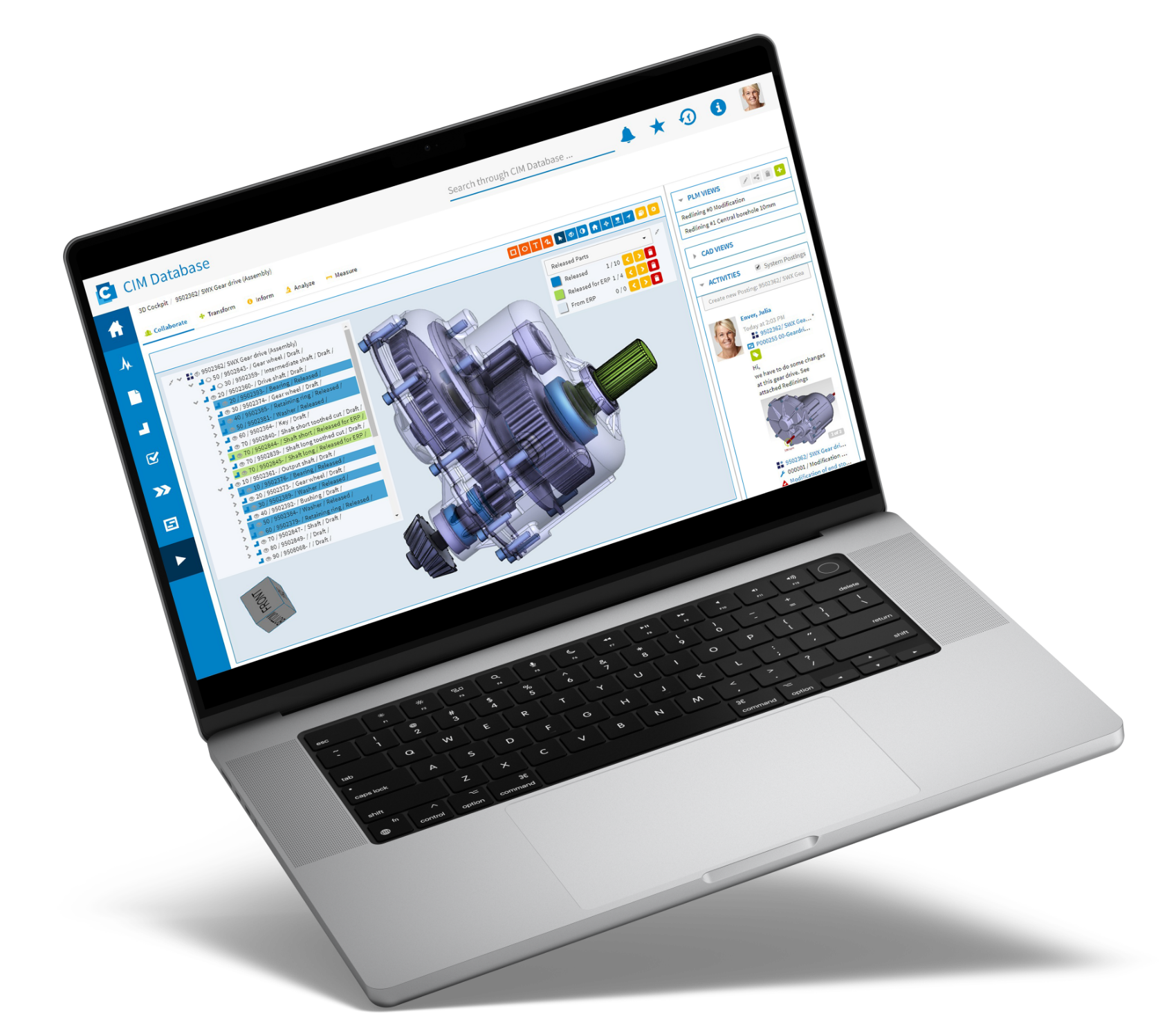CIM Database Cloud features
CIM Database Cloud provides you with comprehensive PLM functionality essential for innovative and digital product development. From conception and testing to market launch, our solution offers everything you need. Choose the functionality that perfectly aligns with your individual needs and goals. Get started now and experience how easy and effective product development can be.
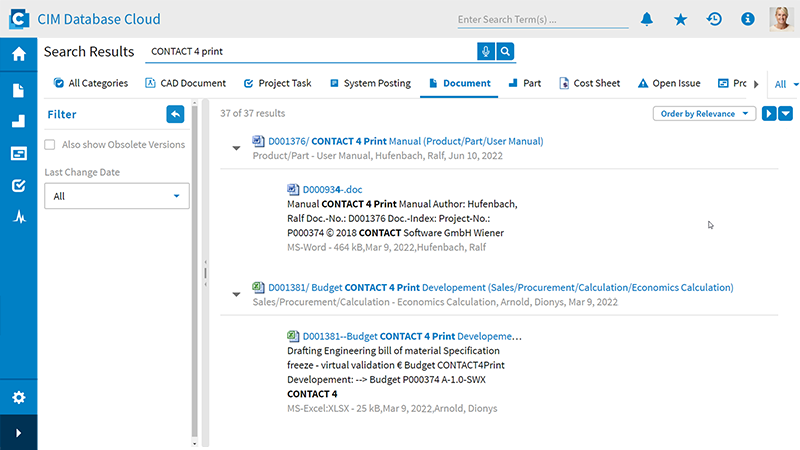
Document Management
- Enterprise-wide organization and sharing of documents and knowledge
- Fast document retrieval with Enterprise Search
- Protection of know-how through roles & privileges system
- Ensures compliance with regulatory requirements thanks to automatic documentation
- Provision of documents, e.g., for review and approval processes
- Seamless integration with MS Office, including Outlook
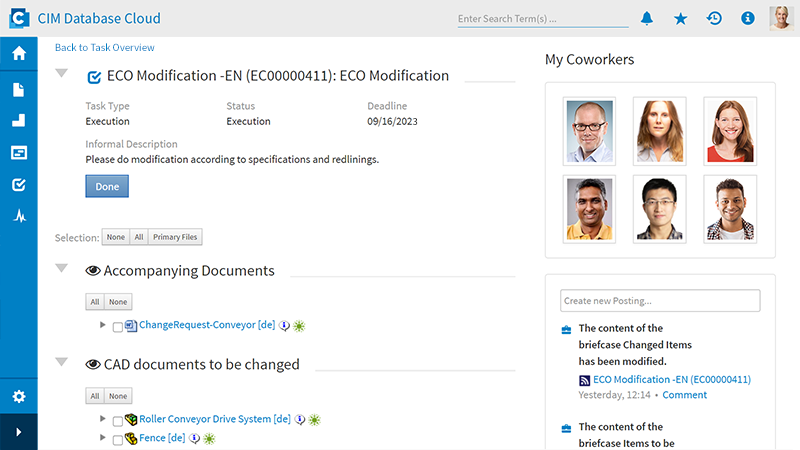
Product Data Management
- Efficient management, distribution, and provisioning of product data such as CAx documents, parts, and bills of materials
- 2D and 3D visualization of individual parts and entire products
- Fast parts search, reduced parts redundancy, and lower costs thanks to powerful classification mechanisms (see “Classification” function)
- Accelerated and transparent planning and implementation of technical changes
- Ensuring quality by capturing issues and implementing appropriate resolution strategies
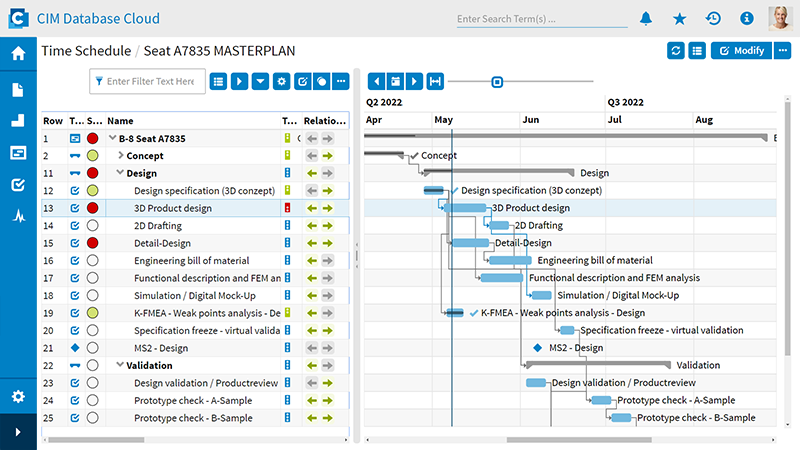
Project Management (Basic & Advanced)
- Share and collaborate on project documents and product data (Basic)
- Efficient task management with open issues and agile task boards (Advanced)
- Holistic planning, controlling, and execution of projects with work breakdown structures, Gannt charts, checklists, and quality gates (Advanced)
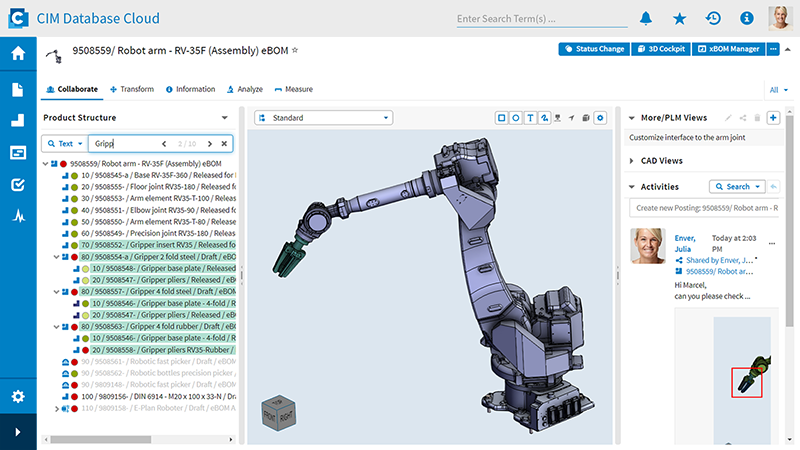
3D Collaboration
- Secure decisions and high process quality through the availability of 3D models everywhere
- Cost savings on CAD licenses and elimination of the need for workaround solutions through separate CAD viewers
- Diverse interaction possibilities for flexible usage
- Seamless integration into PLM specialist applications and direct interlinking with users' typical tasks
- End-to-end process integration from early design phase to product validation
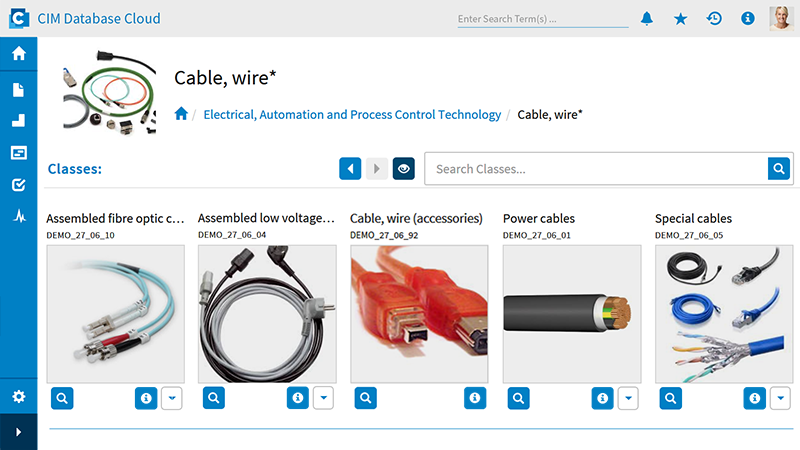
Classification
- Efficient master data organization through universal classification system
- Transparent parts inventory and reduced maintenance effort
- Increased reuse and cost reduction through parts classification
- Rapid parts search through characteristics and the visual class browser
- Support for geometric similarity search through integration with 3D Collaboration
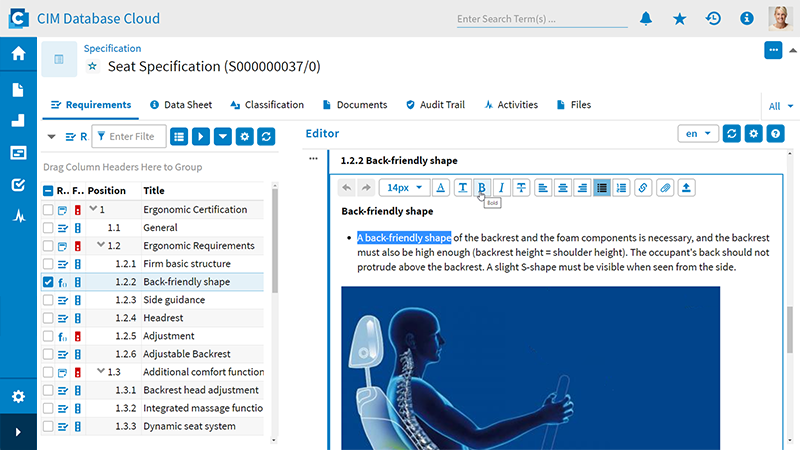
Requirements Management
- Easily enter and edit requirements using the integrated editor
- Manage requirements with transparency: Automate and trace every change with the integrated audit trail
- Graphical visualization of requirements relationships in the context of the virtual product model and intuitive drag & drop editing
- Monitor processing status and compliance with reports
- Exchange requirements with external stakeholders and systems in a secure and efficient manner using baselining as well as import and export functionality
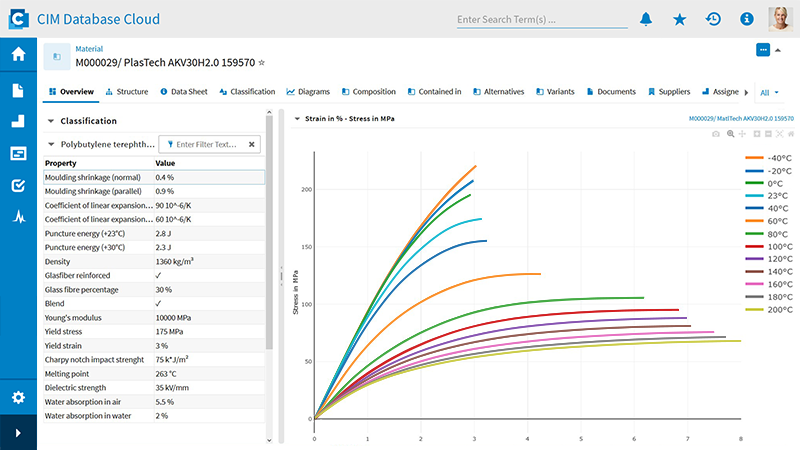
Material Data Management
- Company-wide availability of detailed material information for a wide range of applications
- Seamless collaboration through reliable material data
- Clear representation and easy modeling of material data in various contexts (development, procurement, quality assurance, etc.)
- Efficient material selection and quick identification of alternatives with graphical comparison of material properties
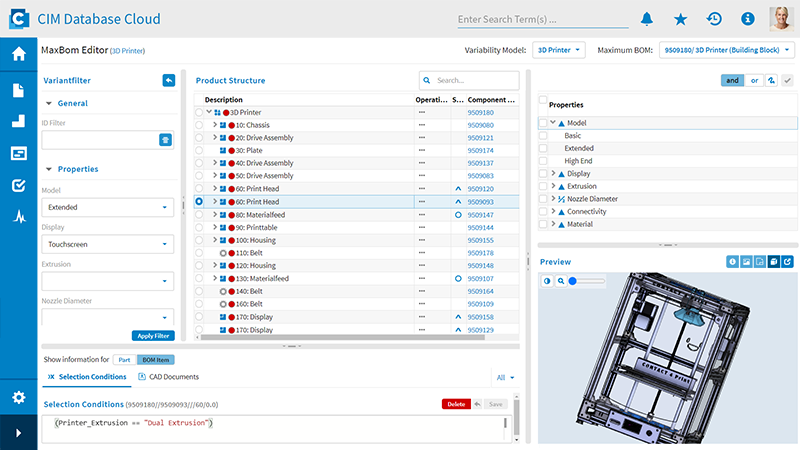
Variant Management
- Efficient management of product variants through rule- and characteristics-based configuration for targeted product variability
- Combination of individual product customization for customer-oriented solutions with efficient value creation
- Management of variability from portfolio management to variant implementation
- Overview and improved decision confidence even in complex variant spaces
- Automatic provisioning of suitable data for subsequent systems such as ERP, CRM, digital shops, or IoT
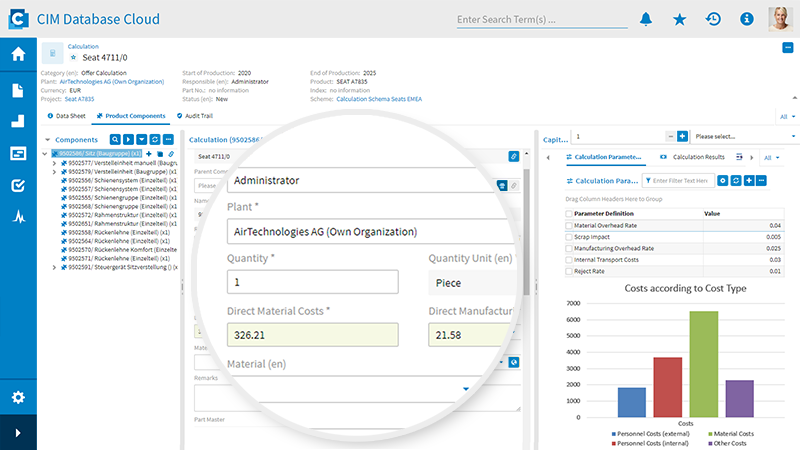
Product Costing
- Quick and direct calculation of product costs in early development phases
- Easily adaptable costing schemes with fixed and variable costs, as well as unit and overhead costs for precise calculations
- Use bills of materials and product structures as calculation components
- Integrate and allocate project costs
- Setting of sales targets for optimal pricing and increased product profitability
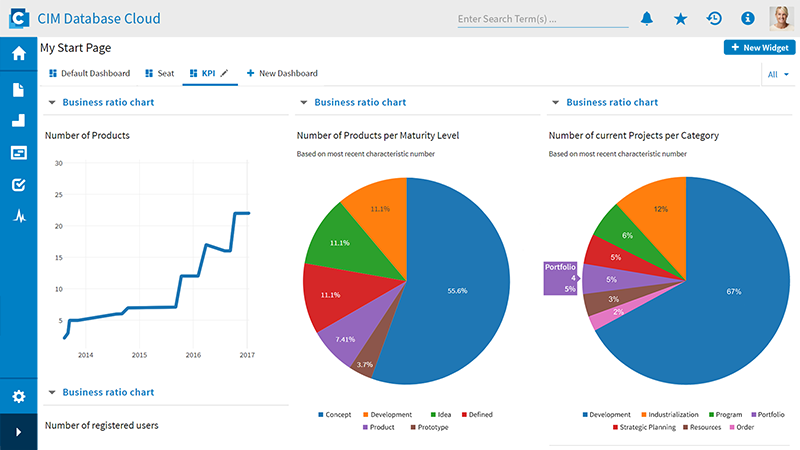
Project Costing
- Cost planning, calculation, and recording directly within the project
- Break down according to your needs: Derive or customize cost items from project structure
- Determine actual labor costs from time tracking
- Synchronize work breakdown structure elements and cost items
- Easy and transparent comparison and analysis of project costs
- Real-time controlling of ongoing target, planned, and actual costs
- Recording and analysis of costs, e.g., time-based by cost type, cost center, or site
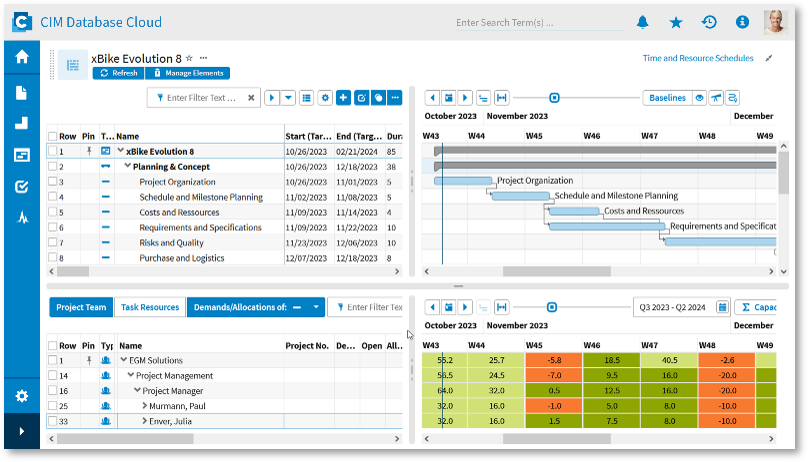
Resource Management
- Strategic resource planning to optimize the use of existing and future planned capacities across the entire project organization
- Define a hierarchical resource pool regardless of organizational structure for optimal alignment with demand planning requirements
- Early planning of rough resource requirements for new projects at the resource pool level
- Preplan requirements in project templates to speed up requirements planning for new projects
- Assign human resources to requirements and drill down to project tasks for detailed planning
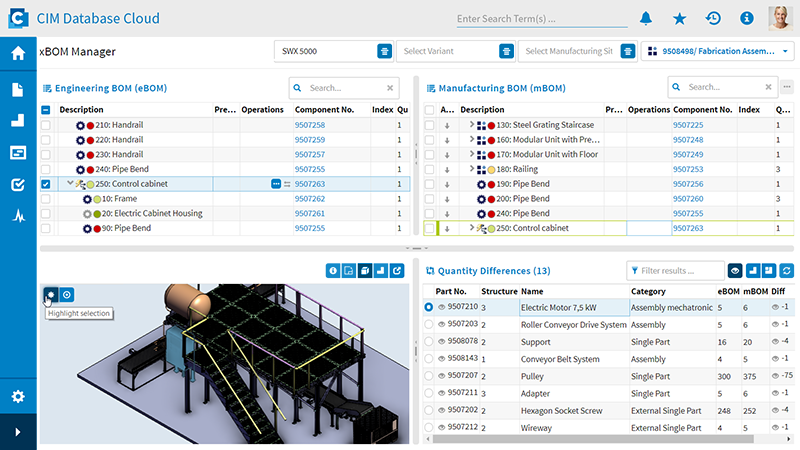
xBOM
- Efficient collaboration between design and work preparation
- Fast and reliable transfer of design changes from the engineering BOM to the manufacturing BOM – for instance, simple and safe resolution of quantity discrepancies
- Reliable error prevention through synchronization in the central work preparation when supplying globally distributed locations with location- or order-specific manufacturing BOMs
- Synchronization with other BOMs for service, spare parts, and maintenance
- Direct and reliable assessment of deviations in the 3D model
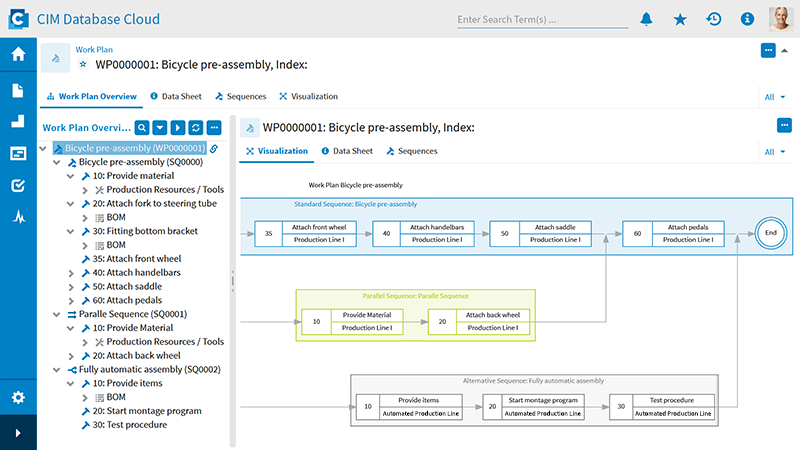
Work Plan
- Efficient transition from development to manufacturing thanks to work planning in the PLM system at an early stage
- Address order-independent aspects of work planning in the PLM system, thereby establishing the foundation for integrated product and process planning
- Improved interaction between PLM, MES, and ERP systems
- Reliable transfer of changes to the engineering BOM to production
- Direct transfer of work plans for processing production order
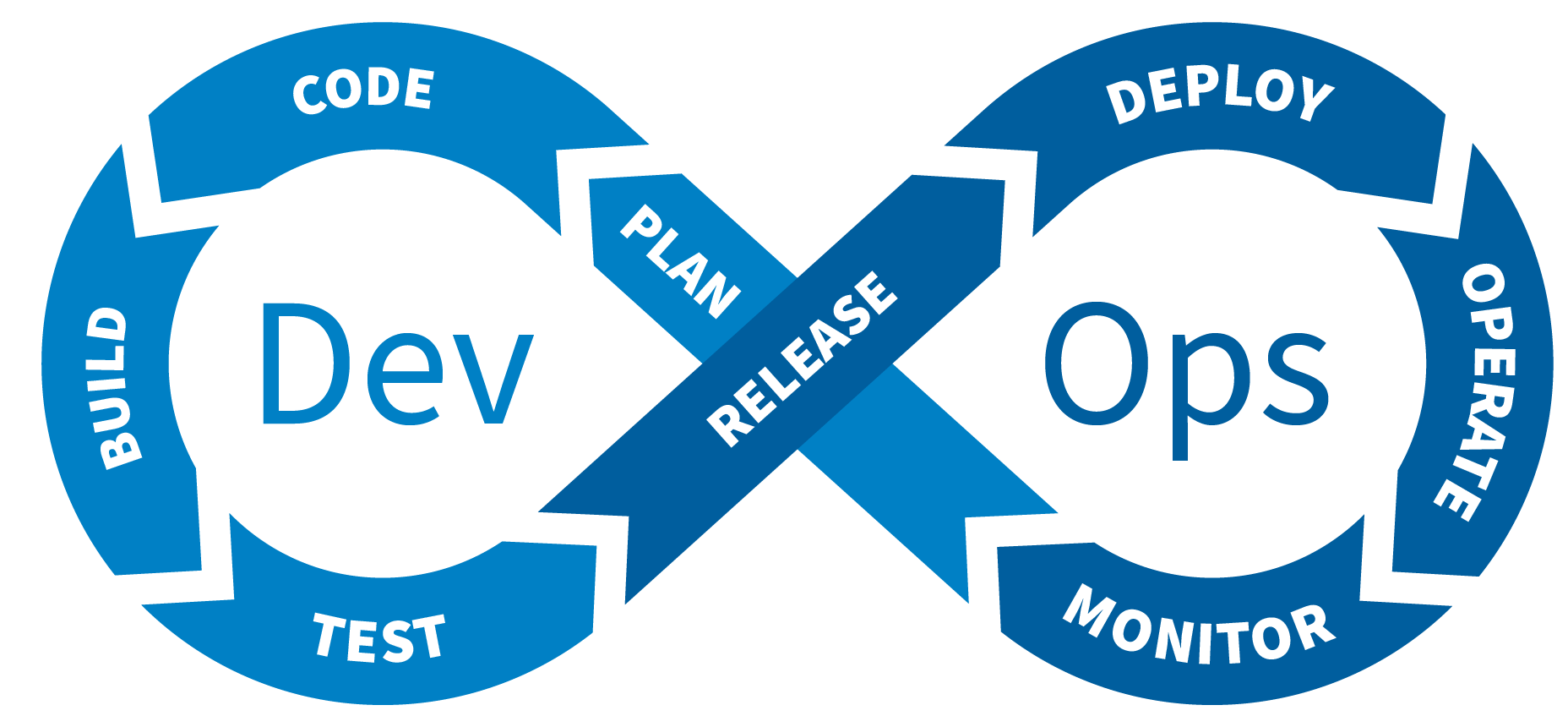
Customizing Tools
- DevOps services developed for companies with high customization requirements for a PLM system
- Ensures customization of specific business processes
- Reliability: Continuity of business processes, both during and after migration
- Benefit: Combination of cloud technology and the adaptability of an on-premises system

